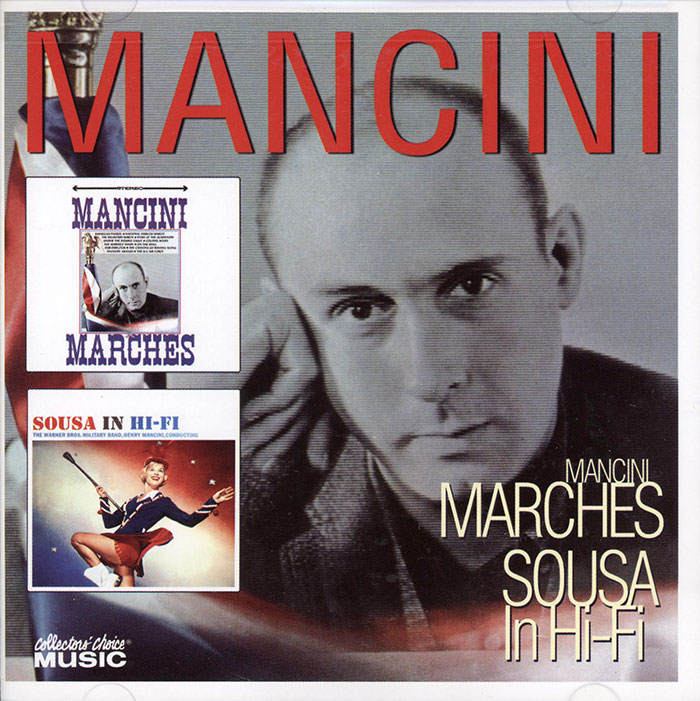Logowanie
Dlaczego wszystkjie inne nie brzmią tak jak te?
Chai Lang, Fan Tao, Broadcasting Chinese Orchestra
Illusive Butterfly
Butterly - motyl - to sekret i tajemnica muzyki chińskiej.
SpeakersCorner - OSTATNIE!!!!
RAVEL, DEBUSSY, Paul Paray, Detroit Symphony Orchestra
Prelude a l'Apres-midi d'un faune / Petite Suite / Valses nobles et sentimentales / Le Tombeau de Couperin
Samozapłon gwarantowany - Himalaje sztuki audiofilskiej
PROKOFIEV, Stanislaw Skrowaczewski, Minneapolis Symphony Orchestra
Romeo and Juliet
Stanisław Skrowaczewski,
✟ 22-02-2017
BARTOK, Antal Dorati, Philharmonia Hungarica
Dance Suite / Two Portraits / Two Excerpts From 'Mikrokosmos'
Samozapłon gwarantowany - Himalaje sztuki audiofilskiej
ENESCU, LISZT, Antal Dorati, The London Symphony Orchestra
Two Roumanian Rhapsodies / Hungarian Rhapsody Nos. 2 & 3
Samozapłon gwarantowany - Himalaje sztuki audiofilskiej
Winylowy niezbędnik
ClearAudio
Cartridge Alignment Gauge - uniwersalny przyrząd do ustawiania geometrii wkładki i ramienia
Jedyny na rynku, tak wszechstronny i właściwy do każdego typu gramofonu!
ClearAudio
Harmo-nicer - nie tylko mata gramofonowa
Najlepsze rozwiązania leżą tuż obok
IDEALNA MATA ANTYPOŚLIZGOWA I ANTYWIBRACYJNA.
Wzorcowe
Carmen Gomes
Celebrating the art and spirit of music - vol. 5 - Reference Songs
- CHCECIE TO WIERZCIE, CHCECIE - NIE WIERZCIE, ALE TO NIE JEST ZŁUDZENIE!!!
Petra Rosa, Eddie C.
Celebrating the art and spirit of music - vol. 3 - Pure
warm sophisticated voice...
SAMPLER - STS DIGITAL, Gregor Hamilton
Celebrating the art and spirit of music - vol. 2 - Love songs from Gregor Hamilton
...jak opanować serca bicie?...
SAMPLER - STS DIGITAL
Celebrating the art and spirit of music - vol. 1 - Leonardo Amuedo
Największy romans sopranu z głębokim basem... wiosennym
Lils Mackintosh
Celebrating the art and spirit of music - vol. 4 - A Tribute to Billie Holiday
Uczennica godna swej Mistrzyni
SOUSA, Henry Mancini
Mancini Marches - Sousa in Hi-Fi
- Henry Mancini - conductor
- SOUSA
AllMusic Review by James Manheim [-] One of the two LPs reissued on this disc is pictured on the cover with the title Mancini Marches, which might lead the buyer to conclude that it contained march music composed by the creator of The Pink Panther and other light classics. Actually, the cover is a little confusing. The chronologically earlier of the two LPs is shown as it first appeared in 1958, as Sousa in Hi-Fi, with the original artwork showing a blonde drum majorette. It was later reissued, as Sousa's Greatest Marches, with the majorette replaced by a picture of the newly popular Mancini. The second album started out in 1959 as March Step in Hi-Fi; it, too, was reissued, as Mancini Marches, with an enlarged picture of the bandleader. In this case the second version is shown, with its Mancini Marches title; the marches are all by composers of the late nineteenth and early twentieth centuries, including Sousa. None are by Mancini, who is just the conductor of a pickup Warner Bros. Military Band. The two albums also appear on the disc in reverse chronological order. The albums are of quite a bit of interest to Mancini fans, for they came about at his own instigation, and the LPs are not at all common finds in thrift shops and the like. Mancini's career as a bandleader began, you may be fascinated to learn, at the head of the Sons of Italy Marching Band in Aliquippa, PA. The original artwork and liner notes of Sousa in Hi-Fi (including the majorette) and of Mancini Marches are incorporated into the booklet design, and there's also a new set of informative notes by Gene Sculatti. The performances of the marches themselves are competent but not thrilling, with the main attraction of the program being the inclusion of some lesser-known items, including the original American Patrol (the "patrol" was a march-like genre associated with the minstrel show) and some attractive items from the Sousa repertoire. The late-'50s sound is quite a bit more pleasant on Sousa in Hi-Fi than on Mancini Marches, even though the two LPs must have been recorded in similar circumstances. This is a well-done collectors' release from, naturally enough, the Collectors' Choice label.
























